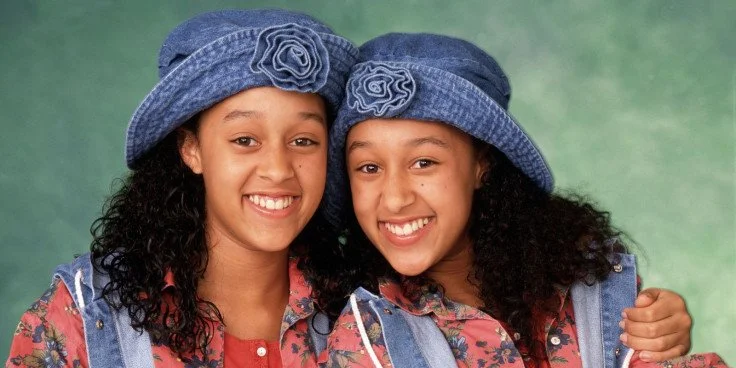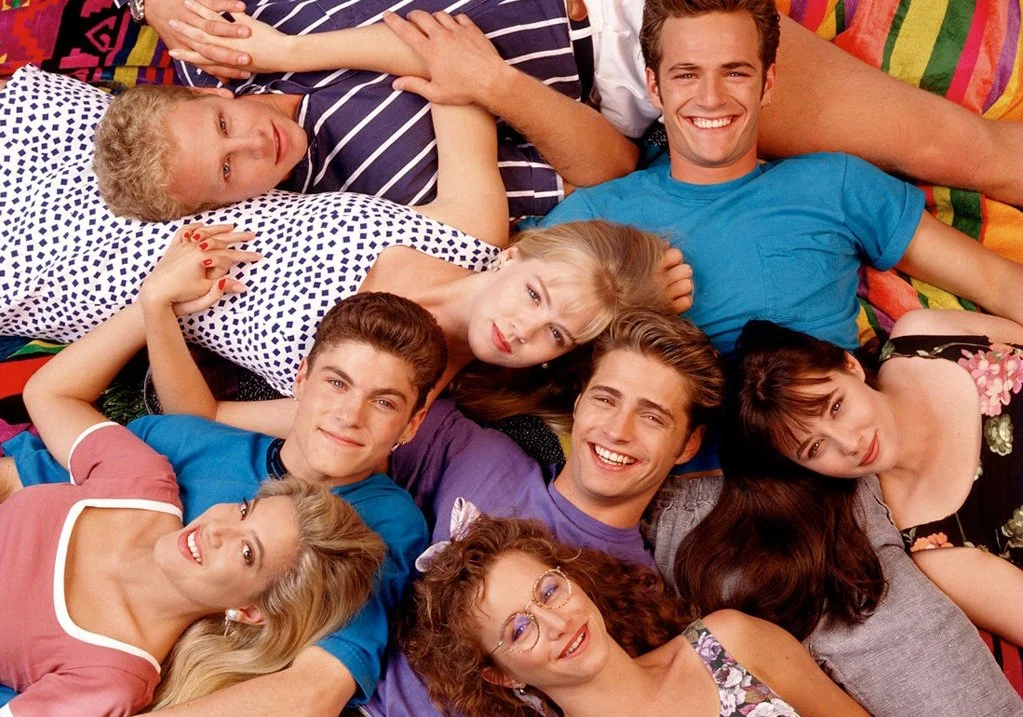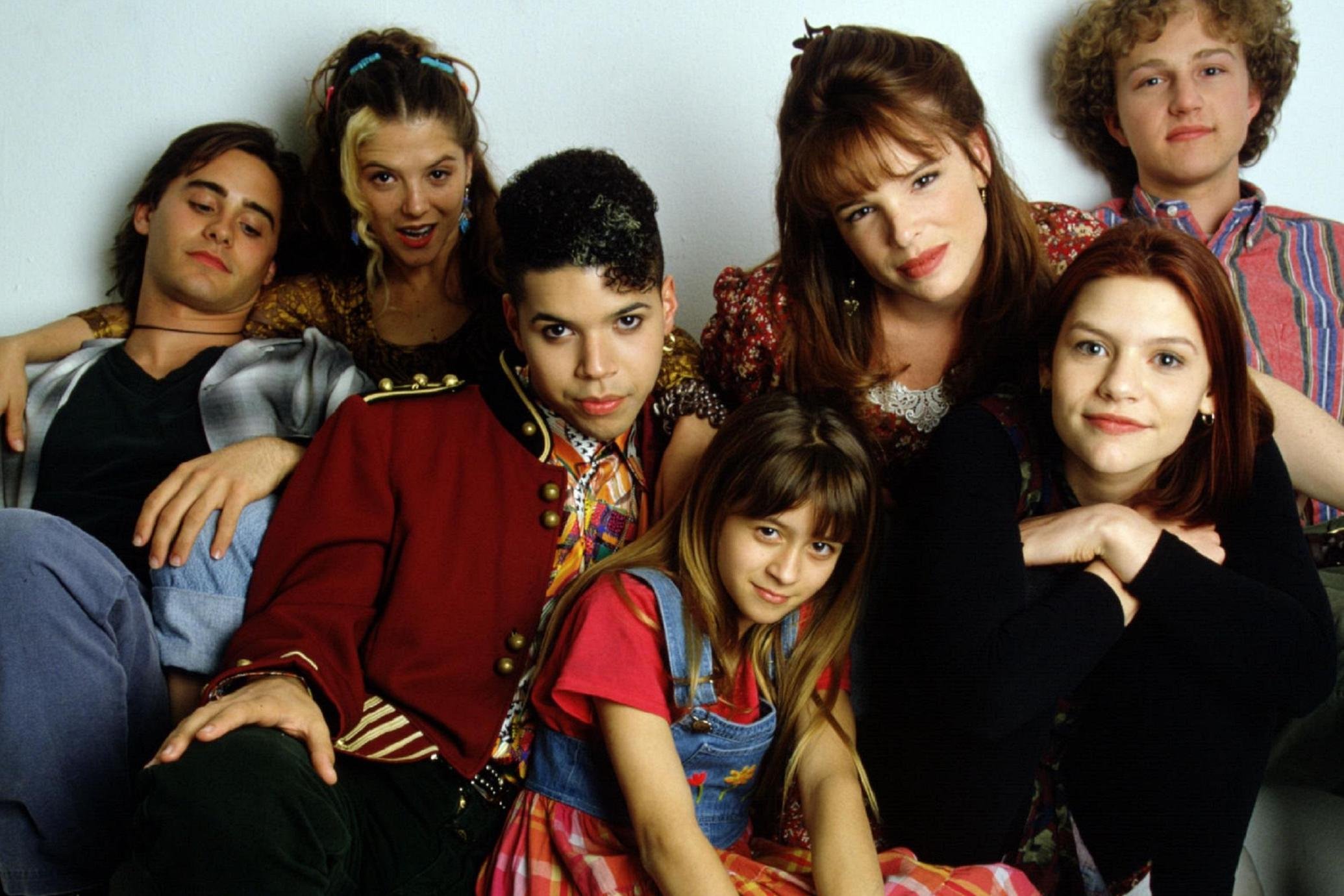We Used to Be Friends: American Teens on the Small Screen—Before Buffy
by Emily Maesar, Associate TV Editor
When I first started doing yearly projects at MovieJawn, I began by talking about teen films in “You Can’t Sit With Us: Cinematic Lives of American Teens.” That was a series about interrogating what those teen films, within specific genres, were about across time… and what they said about the adults who made them. I then shifted to some television related topics, with Captain’s Log about the first three Star Trek shows and their impact on culture and production, and then with a less frequent series on the making of TV: The Syntax of Television.
All of which is to say that We Used to Be Friends: American Teens on the Small Screen is a return to form, but in my medium of choice. So, let’s talk about teen shows! There’s a lot to be said about them, similar to teen films. They have something to say about how adults view younger people and how they viewed their own adolescence, not to mention the kind of cult status teen television has rarely finds its equal on the silver screen—especially in pure quantity.
Now, being me, I wanted to start with the show that I consider to be the premiere teen show of the modern era: Buffy the Vampire Slayer. It’s my favorite, but it’s also not just a personal opinion. Emily St. James and Caroline Framke wrote about Buffy’s impact for the 20th anniversary at Vox, saying: “Of course, there had been teen booms in pop culture prior to that moment. What was different with the boom that Buffy helped set in motion was an increase in critical respectability of teen-centric stories.”
Basically, Buffy changed teen television in the 1990s and we haven’t really looked back since. But, since TV is a different medium from films, operating in different ways, I wanted to look at a decade of teen shows but specific to how television functions. Which means that every month I’ll be looking at a specific season, which tends to start around September of one year and runs until about May of the next. So, rather than teen shows of 1996, it’s more like teen shows of the late 1996 and early 1997. The shows that finished their season in 1996 are potentially very different from the ones that are starting up just a few months later, after all. The business of television is always working ahead of what the general public is watching, so we should as well with our analysis.
However, before we actually get started with the television season that birthed Buffy, let’s talk about what teen shows leading up to it looked like. I kept to the 1990s, since that really seems, at least in my humble opinion, to be the actual start of teen centric media on television. There were still lots of more family-based shows, like Boy Meets World or Sister, Sister, but the early part of the decade saw influential and specific shows like My So-Called Life, Beverly Hills, 90210, and Party of Five. Adults are sometimes present and part of the plot (like with My So-Called Life), but those are all shows that really focus on the teen experience within their own storylines.
Boy Meets World and Sister, Sister occupy an interesting space when considering teen shows and their evolution. There are always shows like them, though as time marches on they tend to feel more adolescent despite sometimes having older characters. The shows of my youth in the late 1990s and early 2000s that I would put in the same category as these two shows were often on networks like Disney and Nickelodeon. Shows like Lizzie McGuire, That’s So Raven, or the original iCarly all have a specific feel that is in line with Boy Meets World and Sister, Sister, but it’s my opinion that a lot of that same-ness has more to do with the shows being half-hour comedies than anything else.
In those shows adults, specifically parents, are largely involved but often don’t have their own storylines until the show is on for a while. It’s not quite Facts of Life or Wonder Years, where there’s an equal chance the adults will have an A storyline in any given episode, but they’re often the subjects of the B storyline. These are also shows that really focus on teen and young adult mischief, rather than something that feels particularly adult. There might be drama and growing up that happens, but those episodes and storylines tend to be rare and have a certain movie-of-the-week quality to them. And yet, these shows persist—they are an important part of the adolescent media landscape.
However, it was in the 1990s when we started to see a very distinct breakaway from the young adult/family half-hour comedy. It was a time when teen soap operas really entered the scene and the biggest and best of them was Beverly Hills, 90210. It’s a show about twin teens who move with their parents to Los Angeles and start a new school in Beverly Hills, a notoriously rich neighborhood in the city. It started in the 1990-1991 season, making it the perfect bridge between the way we were viewing teens in the late 1980s and how we’d come to see them in the early 1990s.
The pilot shows both twins in romantic relationships and how those look and behave in a 1990’s Los Angeles high school. Brandon (Jason Priestley) keeps his relationship to the school, dealing with sex rumors and how they affect the girl he likes. Brenda (Shannen Doherty), however, ends up dating an older guy, who does think she's an adult, and it crashes and burns from there. The parents and teachers are shockingly few and far between, but I can only imagine added to the fact that this show went off like gangbusters.
While Beverly Hills, 90120 remained perhaps one of the most influential teen soap operas, there was a shift in the mid-1990s to do something slightly more realistic in teen television. Enter the one season, cult classic My So-Called Life. It’s a show where the parents are more involved because they are a source of conflict for Angela (Claire Danes). Now, while it wasn’t the first time this existed on the small screen, it was one of the most memorable. My So-Called Life gave a more realistic take on the kinds of less serious parent-teen conflicts of the shows that came before it. One could argue that the things people love about the mother-daughter relationship, particularly its truth and antagonistic style, in Greta Gerwig’s breakout film Lady Bird can be seen in the relationship between Angela and Patty (Bess Armstrong).
And, in the same TV season, there’s the juggernaut of Party of Five. The show is about five siblings (that’s the party) who are living on their own and trying to survive in San Francisco after the death of both of their parents. It has a cast that would go on to do great and interesting things, like Neve Campbell, Matthew Fox, Scott Wolf, and Jennifer Love Hewitt (who appears starting in season two). Like many shows before it, Party of Five was ultimately conceived of by an executive who was trying to fill a slot on the network. Beverly Hills, 90210 was on its fourth season and they needed something to potentially replace it. The original idea was much more in the vein of Don’t Tell Mom the Babysitter’s Dead—dark, but firmly in the comedy space. Which is, decidedly, not where Party of Five fits in. It actually has the feel of the US version of Shameless nearly two decades before that dynamic hit a premium TV network (with the notable exception of living parents and being on a broadcast network). Party of Five is often noted as one of the first teen shows to really move the genre away from the soap opera influence and toward more adult drama, allowing the kinds of shows we’ll be discussing over the next year to really flourish.
Honestly, I’d say that the world that Buffy and the rest of the 1996-1997 season are coming into and are a result of, is strongly influenced by both Party of Five and My So-Called Life. They both aired in the season prior, and their successes critically may have had a lot to do with the WB seeing potential in the Joss Whedon series. Obviously, they aren’t genre shows and Buffy is a distinct one, but the genre of a show is merely one element that moves things forward.
In the same way that Hill Street Blues is largely credited as the first serialized show on American television, so too can Party of Five and My So-Called Life be credited (at least in part) into bringing a more realistic and emotionally realized set of characters, relationships, and setting to teen shows. Which is not to say that half-hour teen comedies or teen soap operas don’t remain equally engaging to audiences of all ages even now, but there’s a type of credibility that the grounded dramas bestowed onto the teen shows coming after them. It’s part of what I’m aiming to take a look at over the next year, after all. However, I’m also interested in the question of why it even matters. Do teen shows need legitimacy? I think the answer will ultimately be “yes, but not the way you’re thinking about it.” The more interesting question is what that legitimacy even looks like.
So, next month I’ll be talking about the season of TV that birthed Buffy the Vampire Slayer. Maybe starting with the 1996-1997 season feels a bit random, but all things considered for both myself and for the future of teen shows after that television season, Buffy is kind of the ultimate start point. We can talk more about why next month!





